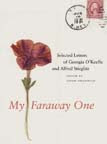
 Several weeks ago, a small group of local bloggers (Stefan, Meg, and Michael), and a good friend from college, joined me for a tour of Hampton. As with most things these days, I am a little behind on the house tours, so I hope you will forgive my tardiness ~ especially since Meg has already delighted you all with a fabulous summary of our trip (here and here).
Several weeks ago, a small group of local bloggers (Stefan, Meg, and Michael), and a good friend from college, joined me for a tour of Hampton. As with most things these days, I am a little behind on the house tours, so I hope you will forgive my tardiness ~ especially since Meg has already delighted you all with a fabulous summary of our trip (here and here).An impressive Georgian-style mansion, Hampton sits high on a hill in Towson, Maryland, overlooking what was once a 25,000-acre estate belonging to the prominent Ridgely family. Construction on the main house began in 1783, and when completed in 1790 it was the largest private residence in America. The color of the unusual pink stucco exterior is derived from the local soil, and was at one time much pinker than it is now. To my mind, Hampton has a distinctly English feel ~ in fact, Charles Ridgley is said to have been inspired by Castle Howard, his mother's ancestral home.
The interiors are extraordinary ~ ranging in style from Georgian to Victorian, and including many original furnishings. However, one of its greatest treasures, Thomas Sully’s portrait of Eliza Ridgely, 1818, is now in the collection of the National Gallery (where, I might add, I visit it often). During the 19th century Hampton was famous for its grounds, which included six parterre gardens, laid out on a series of three terraces, and planted with ornamental flowers and boxwood. The National Park Service, which now owns the property, has restored two of the parterres, and rebuilt the 1820s Greek Revival-style orangery, which was destroyed by fire in 1928.
You can see a bit more of the tour on my flickr ~ oh, and some bloggers in action.


















4 comments:
Was such a fun day!! I look forward to the next tour :-)
I need to share the photos I took with you! I had such a great time and cant wait for our next outing.
One of my favorite houses. That dining room! KDM
I just discovered your blog today, and I am looking forward to reading more. I love your gentle writing style. I was just asked to assist an architect friend in writing the profiles for three houses, one of which is a historical renovation, two of which are new but designed and created in a classical vein. I start the project next week with tours of the home, and I may come over here before writing them for some house inspiration.
Post a Comment